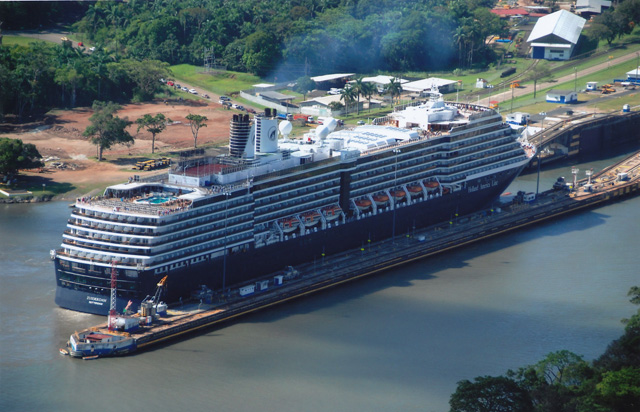The Panama Canal is a lock-type canal approximately 50 miles long uniting the Atlantic and Pacific Oceans at
one of the narrowest points of both the Isthmus of Panama and the American Continent.
The Panama Canal was opened to commercial traffic on August 15, 1914. Since that time, more
than 900,000 vessels carrying more than 6 billion tons of cargo have passed through the waterway.
Savings to shipping and ultimately to consumers are enormous, and entire trade areas and industries
have been developed as a result of its opening. Though the basic design of the Canal remains the
same as when it opened in 1914, there have been many physical improvements and new procedures
instituted to keep pace with the growing demands of the world's maritime traffic.
The ongoing multi-million dollar project to widen Gaillard Cut will increase capacity by allowing
the largest ships to pass in the area where the Canal was cut through the Continental Divide.
The Canal's current capacity is around 13,000 vessels annually. The Canal was transferred to the
republic of Panama on December 31, 1999, and is being administered by the Panama government's Panama
Canal Authority.
The operation of the locks rely solely on rainwater that fills Gatun Lake. The locks are filled strictly
through gravity flow, i.e. there are no pumps at all in the system. The quantity of water used to fill a
lock each time is approximately 53,000,000 gallons! The massive gates weighing up to 745 tons each are
hollow and actually float, requiring only a 25 horsepower electric motor to open and close them. Each
lock raises (or lowers) a vessel approximately 28 feet, for a total of 85 feet from sea level to the
Gatun Lake level. A control House on the center wall of each lock's higher chamber directs this entire operation.
Vessels use their own propulsion and are assisted in the locks by electric locomotives, called mules.
For an animated explanation of the operation the the Panama Canal lock system, you can go to:
Panama Canal Operation
For an actual live view of a ship passing through the locks, check out:
Live Camera


